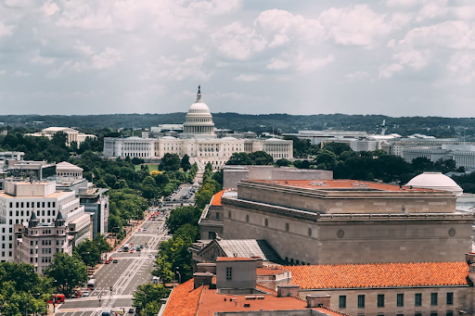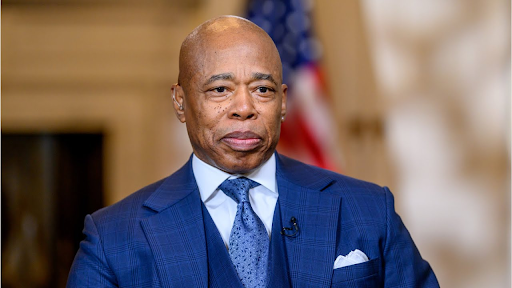
This year hasn’t been pretty. Though COVID-19, for the most part, is now spoken of in the past tense, Americans have had to deal with issues that have affected everyday life. Most notably is that our country is experiencing a cost of living crisis. For most Americans this crisis is inescapable in everyday life.
The beautiful thing about American democracy is that we have the power to hire and fire our leaders. When they do a bad job we fire them.
Americans elected a Democrat trifecta in 2020. As of Jan. 21, 2021 Democrats have controlled two of three branches of government.
Consider this: year-over-year inflation during February 2021, Democrats’ first full month of control was 1.7 percent according to the bureau of labor statistics. When looking at core inflation, which strips out the volatile categories of food and energy, prices only increased 1.3 percent year-to-date.
Fast forward to June 2022 and inflation peaked at 9.1 percent year over year, headlined by rising grocery and gas prices according to the Bureau of Labor Statistics. Core inflation rose 5.9 percent. The most recent numbers in September 2022 show that inflation has settled to 8.2 percent with core inflation now up 6.6 percent year-to-date.
Inflation at its highest in four decades. This has led to an aggressive short term interest rate hike by the Federal Reserve, also unseen in decades. While this may read like esoteric Wall Street jargon, it’s anything but.
When inflation rises, the value of our dollars decreases. We’re able to afford less of what we need. This means poor families, people on fixed income, charities and minority populations struggle the most.
Though an oversimplification, when interest rates rise, so does the cost of borrowing money. This means that loans such as mortgages, student loans, business loans and forms of debt ultimately become more expensive.
Inflation, in part, was brought on by strong consumer demand for products and services met with a lack of available supply. Demand was ginned up by strong government stimulus as well as the end of oppressive lockdown policy.
When more people want a product than there are available copies, the price of the product rises.
The Federal Reserve’s stated goal is to bring yearly inflation down to 2%, resulting in lower demand and a slower economy. This could be tougher than expected, with monthly inflation figures painting a picture of long term high inflation. Because of this, the Fed’s campaign to raise rates will persist.
The supply issue can be traced to decades of policies by the bipartisan swamp in Washington D.C. that adopted disastrous trade deals like the North American Free Trade Agreement, sending good paying American jobs and supply chains outside of our borders.
Doesn’t it seem like something needs to change? Maybe policies that encourage a reduction of our supply chain’s reliance on foreign nations like China or shy away from fiscal stimulus to the economy while inflation is hot. Reward small businesses and those who manufacture here in the United States. Perhaps take a page from President Ronald Reagan’s book and demand fair trade.
Leading Democrats don’t seem to think so. Massachusetts Representative Jake Auchincloss and Florida Representative Stephanie Murphy took to the pages of the Wall Street Journal’s opinion section to argue for less regulation around trade, and less incentives for good paying manufacturing jobs to be created in the U.S.
“The Biden administration—and both parties in Congress—should pivot toward an unapologetically pro-trade agenda,” the two representatives wrote.
So when rich executives save their companies money by eliminating good paying union jobs, opting instead for cheap labor in other countries as they’ve done historically, that’s what’ll bring down the price of groceries.
Politicians such as Arizona representative Tom O’Halleran, Illinois representative Sean Casten downplayed inflation’s risk. Iowa Democratic representative Cindy Axne called constituents’ inflation fears the result of false advertisement.
Research by the Coalition for a Prosperous America, a nonpartisan think tank, shows that average homes in the U.S. are roughly six times the average yearly wage, whereas the figure was only 3.2 in 1967. Younger home buyers will have a hard time finding a home they can afford and an even more difficult time paying for it. Oh, and now mortgage rates are nearing seven percent at an alarming rate and real wage growth has shrunk for over a year.
Gone are the days on which a family could survive on a single income if they so choose.
Politicians in power argue that rich people are actually falsely inflating the prices of everything, acting almost in cartel-like fashion. Pennsylvania Lieutenant Governor and Senate candidate John Fetterman said on Twitter: “Inflation is *still* squeezing working people every day. We need to crack down on corporate greed to stop it. And make more stuff in America while we’re at it.”
Fetterman might be onto something with manufacturing more in America, but ultimately is comparable to Lucy pulling the football. By Fetterman’s logic, since inflation is due to greed, that must mean that the most altruistic industry is oil and gas. Gas prices declined for 98 straight days over the summer across the United States. Experts say that this can be mostly attributed to supply and demand, global energy markets and fears of a recession.
Americans deserve better. It’s time each and every one of us look at the candidates whose names will appear on our ballots and see if they’ve contributed to the dire moment we find ourselves in and say: “You’re fired”.









